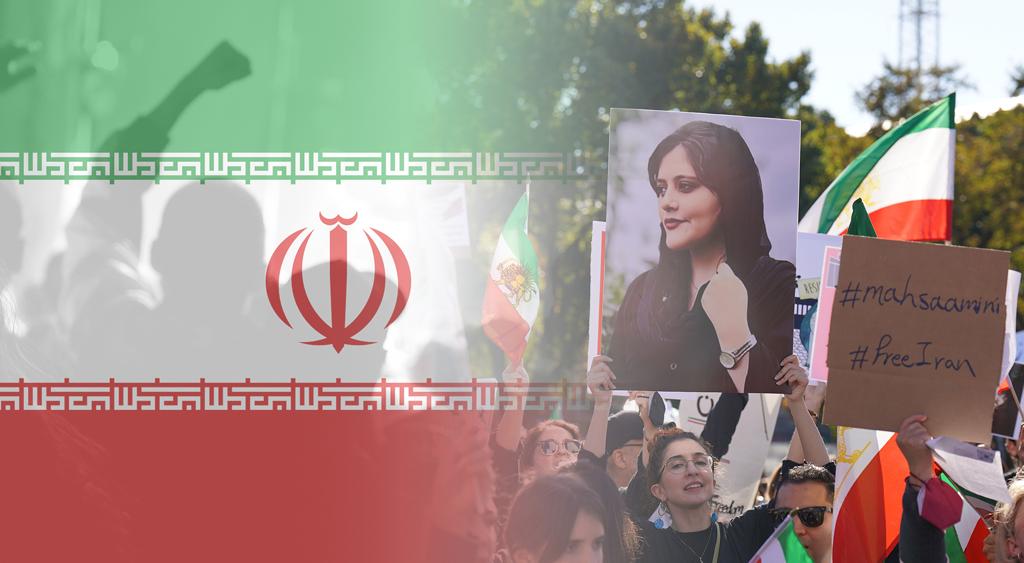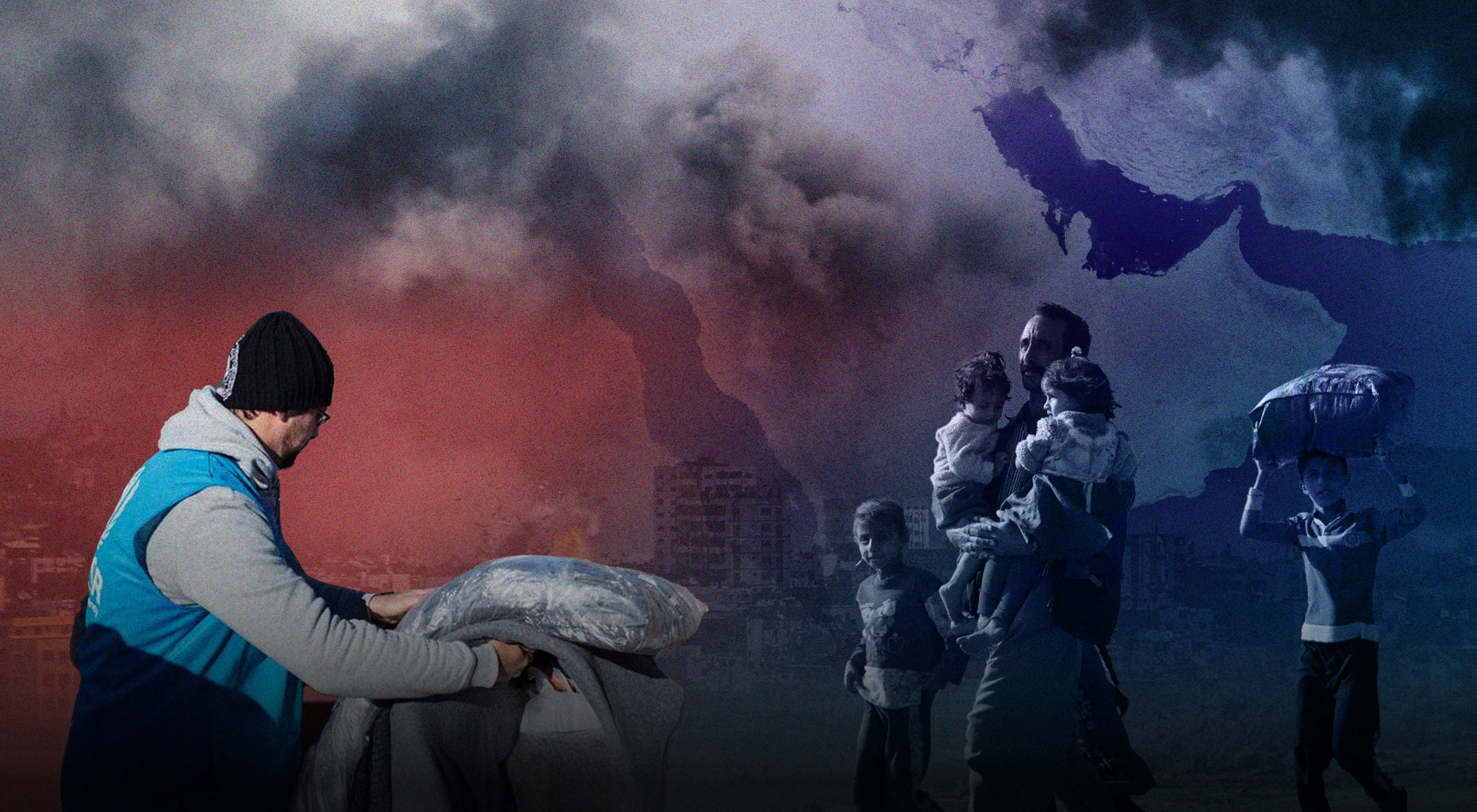Introduction
Public protestors filled the streets of Iran after the death of Mahsa Amini on September 16, 2022. The 22-year-old British-Iranian woman died in police custody following a violent struggle with the morality police, who arrested her for not wearing the niqab, the headscarf required under Iran’s law.[1] What started as a protest over Iran’s strict dress code for women has grown to include Iranians of all ages, genders, ethnicities and classes, encompassing calls for reform and change across the country. The unrest continues with the flaring up of nighttime protests in May 2023 after several weeks of calm.
The current Iranian demonstrations are the sixth wave of protests against the authoritarian-theocratic government since 1999, with each iteration informing future movements. This paper analyzes not only the main causal factors and developments of protests that started in 2022, but also examines how they fit into the larger, historical context of protest movements in Iran. In particular, it focuses on the role of women in demonstrations, the impact they have had on Iranian politics, and possible scenarios of how current protests might play out.
Historical background
The Islamic Republic of Iran has experienced a series of public protests against its government’s policies since it was established in 1979, in the wake of the Iranian Revolution. The “Westernized” monarchy led by Shah Mohammed Reza Pahlavi was replaced by a theocracy driven by extreme Islamic ideologies headed by Ayatollah Khomeini, who was given ultimate authority and power.3 Though that was a fundamental political change, not much changed as far as human rights were concerned.
Under the Islamic regime established by Khomeini, Iranians were deprived of basic rights and freedoms and suffered from pervasive violations of human rights, which impacted the role of women in the Iranian society and made it extremely patriarchal. For example, the Family Protection Law was suspended immediately after the revolutionaries came to power in 1979, meaning men could stop their wives from going out in the street or working. Iranian women do not have the right of assembly and married women do not have the right to an education above primary school. Any non-submissive act on the part of an Iranian woman may be considered a violation of the law.[2]
There have been attempts to protest these conditions, which have had economic, social, and political effects. The first wide wave of protests after the Iranian Revolution occurred in 1999 and was triggered by the closure of the reformist newspaper called Salaam.[3] The operator of the publication, Mohammed Khatami, led a group of university students, who took to the streets to voice their opposition to the authoritarian measures taken by the government. The protesters were attacked by the Islamic Revolutionary Guard Corps and other politically loyal groups in favor of the regime, and the conflict polarized Iranian society.
The first wave of protests in 1999 served as an inspiration for the Green Movement or Green Tsunami (the second wave) of 2009, in which thousands publicly disputed the results of the election of President Mohammed Khatami.[4] When people re-appointed slogans of the 1979 revolution and co-opted the symbol of Imam Hossein to target the government with its own narrative, the #iranelection hashtag in the Green Movement became a “networked aggregator of texts, images, and videos,” creating a shared experience.[5] Most of the protestors were the youth of Iran and university students, who were concerned not only about corrupt elections but about the country’s high rate of unemployment, lack of women’s rights, and austerity.[6]
The third wave of protests (2017-18) was also inspired by austerity and economic hardship, in this case rising prices for basic goods and commodities.[7] A year later, the fourth wave revolved around an increase in fuel prices as well as high rates of poverty and an increasingly corrupt democratic system.
In January 2020, the government shot down Ukraine International Airlines Flight 752, killing 176 passengers. Outrage over the government’s irresponsibility and aggressiveness turned into the fifth wave of protests, which started with students from universities in Tehran and grew to include the public. The government suppressed the demonstrations with force and killed multiple protestors.[8]

Figure 1: Seven Iranian Protests Timeline (Waves)
Current wave of protests in Iran: Causes and developments
On September 16, 2022, Iran’s religious morality police were patrolling the streets of Tehran when they confronted Mahsa Amini over a violation of the mandatory dress code. Mahsa was visiting her family on vacation and was therefore not familiar with the country’s dress code, which dictates that headscarves must be worn to cover women’s hair and that the “tight trousers” Mahsa was wearing were forbidden.[9] The incident escalated and the morality police’s violent detention of Mahsa resulted in her death. The government attempted to cover up the crime by attributing the cause of death to cardiac arrest; however, the family proved this was false and Mahsa’s story spread quickly across the city and the country. Mass protests broke out over the harsh rules and other policies that discriminated against women. The government again used force to crack down on demonstrators; five protestors were killed and 75 injured.
The Supreme Leader Ali Khamenei, appointed by a group of religious officials and considered to have the authority of God, is guided by the principles of Shari’a law, although some scholars believe Iran’s interpretation of Shari’a is too extreme. The Supreme Leader also has the power to appoint judges and decision makers,[10] including the Guardian Council, who is responsible for the implementation of Iranian laws. The Iranian Parliament has an unequal and imbalanced structure, and its decisions are considered more opinion than law. Therefore, there is no real opposition to the theocratic regime.
Iran’s courts have ruled that a woman’s life is equivalent to two men, and the Iranian constitution says that the main role of women is to be part of a family and to be more involved in the family structure as a base of society.[11] This ethos is applied to all aspects of a woman’s life. Women can be educated, for example, but they do not have access to the same job opportunities as men, and they are forbidden from participating in sports or even riding bicycles. This results in high rates of illiteracy and poverty, and even bad health,[12] which have socio-economic consequences, especially as these effects accumulate over years. To enforce the laws, the government established the Gasht-e-Ershad (Guidance Patrols), which was implemented in the 1990s after the Iran-Iraq war. Over the years, there have been numerous complaints by women of police harassment and even brutality.[13]
Government and public responses
On September 22, 2022, the Iranian government described the protestors as “an organized conspiracy hatched by the enemies of the Islamic Republic against the country’s security.”[14] They portrayed the protestors as anti-Islamic, claiming their actions were against the words of the Quran and a source of instability for the country – an evil strategy of the enemy aimed at weakening the Islamic regime.
On September 25, 2022, the President of Iran, Ebrahim Raisi, activated government defenses against the protestors.[15] The Islamic Revolutionary Guard used tear gas, gunfire, water cannons, and physical beatings against the peaceful demonstrators, strategies employed in previous uprisings. The indiscriminate use of violence was aimed at intimidating protesters across the country.[16]
The public used social media to express their feelings about the death of Mahsa Amini. They demanded the return of their rights and freedom and called for international assistance in changing the regime.[17] Youth, especially women, spread information about women’s rights and the situation of Mahsa Amini through hashtags, such as #Mahsaamini, on TikTok and other platforms.[18] Women also shared stories about their experiences with the government and the morality police. These posts, which included videos, Tweets, pictures and documents, went viral and inspired people from other countries to show their support for the movement. The government responded by shutting down the Internet, but this authoritarian act might have backfired, bringing unwanted publicity to the conflict on an international scale.
Implications of the protests
After analyzing different events throughout the modern history of the Islamic Republic of Iran, there are several repetitive patterns that emerge:
- All protests start peacefully. The public demands their freedom and rights through protest; however, the government feels threatened. They fall back on the approaches of past governments, which were “successful” in terms of tamping down dissent. The cycle of violence is perpetuated, from the mujahedeen of the Iranian Revolution, who overthrew the Shah, to the Revolutionary Guard, who “overthrow” the protestors.
- Most of the people involved in the protests are students who “do not know better” and believe they can change what is wrong. The younger generation is idealistic and has less fear, so they demand their feelings be expressed and heard. The first protests in 1999 were started by university students, who demanded change, democracy, freedom and liberty, and each successive wave has featured this demographic.
- The government steps up its suppression after protests gain traction, passing new laws that make demonstrations illegal. The tension between the government and the protestors is never relieved, and another incident inevitably sets off a new wave of demonstrations.
As each wave of protest has been suppressed by the government, those involved have not forgotten their grievances. When a new movement begins, many previous demonstrators join in and revive their demands. The most recent protests started as a reaction against the government’s harsh policies against women but escalated to include demands for regime change. Protestors have expressed their desire for a more liberal system that allows for freedom of expression and have questioned the theocratic regime that came out of the 1979 Iranian Revolution.
Any movement that advocates for regime change must also find a way to work around current government policies that punish protestors, make demonstrations illegal, and use government media to portray the protestors as a source of instability. The government is still influential and the strategies it used to deter revolution in the past were ultimately successful. The absolute power of the mullahs is exemplified in the Revolutionary Guard, who have shown they will take any means necessary to tamp down dissent, even if these methods violate human rights.
Regime change will require a movement as strong as the one that established the Islamic Republic of Iran. Similarly, it will require a leader such as Ayatollah Khomeini, who was able to bring enough people together to overthrow the monarchy. Change will be difficult to achieve internally, and intervention from external forces is unlikely because the international community is currently involved in many other conflicts, such as the war in Ukraine.
Conclusion
The Iranian government has almost always utilized its military and police forces as a means of enforcing authoritarian laws, quelling protests, and generally controlling its population. This approach is exemplified by the official use of force to handle six waves of protest since 1999. Following the death of Mahsa Amini, the government mobilized the Revolutionary Guard and morality police to quell street protests and deter any instability that could potentially challenge its authority. Protests are deterred through instilling fear into citizens, who are likely to carefully consider whether or not to express support for issues such as freedom of speech or women’s rights.
Radical change is currently unlikely, however, because Iran is an energy and oil exporter at a time when global energy markets are already stretched by the Russia-Ukraine war. More importantly, any Western or American intervention would negatively affect the nuclear negotiations with Iran to revive the Iranian nuclear agreement, known as the Joint Comprehensive Plan of Action (JCPOA). The revival of the nuclear deal is still a Western and American priority.
Any reform of the current regime in Iran is therefore likely to occur from within. Moderate governmental reform would satisfy the protestors and presumably achieve a level of stability. Such reform would to some degree soften current authoritarian rules, and establish a level of leniency and transparency vis-à-vis the public. However, this scenario is also unlikely because the Supreme Leader controls decision-making in the country, and parliamentary members have seldom disagreed with his past declarations or decisions. Further complicating pushes for reform is the fact that laws in Iran are based on Shari’a and are extremely difficult to change without the consent of the Supreme Leader.
To avoid the conflict, the government might change its approach, for example, by changing the enforcement of the hijab law. There is hope that method of enforcement will move away from the morality police and towards a more flexible and tolerant approach. One proposal currently being considered is to use surveillance cameras and to send messages to “offenders” via SMS. Women who violate the law will be warned three times before having their bank accounts blocked. On December 3, 2022, government spokesmen Mohammed Montazeri even recommended that the morality police be abolished;[19] however, the lack of response from Colonel Ali Sabahi, the head of public relations of the Greater Tehran Law Enforcement, dampened enthusiasm. It is, however, unlikely the morality police will be eliminated because of the disagreement between government entities about different approaches.
References
[1] “Who Is Mahsa Amini, Whose Death Sparked Iran Protests?” Reuters, 28 September, 2022, http://bitly.ws/EooI.
[2] Alison E. Graves, “Women in Iran: Obstacles to Human Rights and Possible Solutions,” Journal of Gender & the Law 57, no. 5 (1996): pp. 58-60.
[3] Behrouz Turani, “Remembering the July 1999 Iran Student Movement: A Forgotten Protest?” Radio Farda, 9 July, 2020, http://bitly.ws/ALDN.
[4] Borzou Daragahi, “A Decade After the Iranian Green Movement, Some Lessons,” Atlantic Council, 12 June, 2019, http://bitly.ws/EooN.
[5] Negar Mottahedeh, #iranelection: Hashtag Solidarity and the Transformation of Online Life (Stanford, California: Stanford Briefs: Stanford University Press, 2015), p. 17.
[6] Victor Sundquist, “Iranian Democratization Part II: The Green Movement — Revolution or Civil Rights Movement?” Journal of Strategic Security 6, no. 1 (2013): pp. 35–46.
[7] Ali Fathollah-Nejad, “The Islamic Republic of Iran Four Decades On: The 2017/18 Protests Amid a Triple Crisis,” Brookings Doha Center, Analysis Paper 28 (April 2020), http://bitly.ws/ALDR.
[8] Madeline Holcombe, Artemis Moshtaghian, and Ray Sanchez, “Iranian Protesters Take to Streets after Tehran Admits Ukrainian Plane Was Unintentionally Shot Down,” CNN, 11 January, 2020, http://bitly.ws/Eop9.
[9] Celine Alkhaldi et al, “Clashes in Iran as Thousands Gather at Mahsa Amini’s Grave, 40 Days After Her Death,” CNN, 27 October, 2022, http://bitly.ws/ALDU.
[10] Ibid.
[11] Iran Chamber Society, “The Constitution of Islamic Republic of Iran,” November 21, 2022, http://bitly.ws/Eopc.
[12] “Multiple Crises Halt Progress as 9 out of 10 Countries Fall Backwards in Human Development, United Nations Development Programme Report Warns,” UNDP, 8 September, 2022, http://bitly.ws/ALDX.
[13] Sanya Mansoor, “How Iran’s Morality Police Enforces a Strict Interpretation of Islamic Law,” Time, 10 November, 2022, http://bitly.ws/EopZ.
[14] “Iran’s Guards Break Their Silence, Warn Protesters,” Iran International Newsroom, 22 September, 2022, http://bitly.ws/Eoqm.
[15] Ibid.
[16] United Against Nuclear Iran, Iran’s War on Protesters: Death, Detention, and Darkness, October 2022, http://bitly.ws/ALEb.
[17] Mina Aldroubi, “What’s Happening in Iran and How Has Social Media Helped Movement against Morality Police?” The National, 28 September, 2022, http://bitly.ws/ALEf.
[18] Holly Dagres, “Meet Iran’s Gen Z: The Driving Force Behind the Protests,” Foreign Policy, 1 November, 2022, http://bitly.ws/Eoqr.
[19] “Iran Regime Plans to Pursue Mandatory Hijab By New Methods,” Iran International, 6 December, 2022, http://bitly.ws/EorB.








